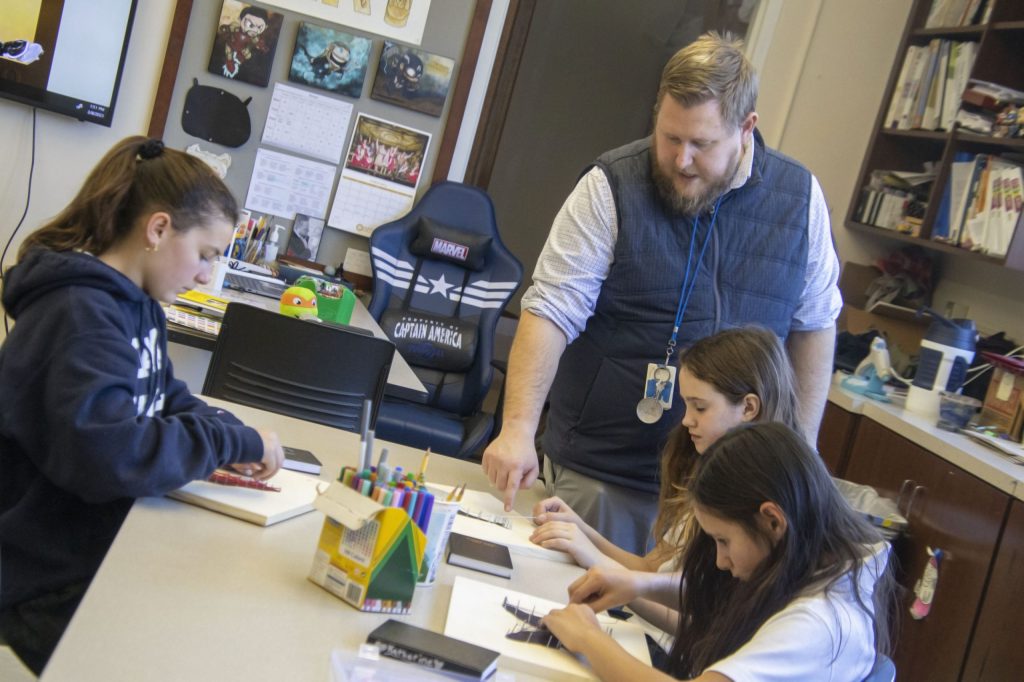OKS Voices: Tim Brown, Lower School Art Teacher
 Tim Brown, Oak Knoll’s Lower School Art Teacher, says it’s the school’s prioritization of the arts that truly sets it apart. “I just really appreciate this beautiful art room — having a kiln right here, having the drying racks available, storage space for 3D projects, and the support I get. It’s a huge investment, and the students get any supplies they need.”
Tim Brown, Oak Knoll’s Lower School Art Teacher, says it’s the school’s prioritization of the arts that truly sets it apart. “I just really appreciate this beautiful art room — having a kiln right here, having the drying racks available, storage space for 3D projects, and the support I get. It’s a huge investment, and the students get any supplies they need.”
While Brown has been a member of Oak Knoll’s creative arts faculty since 2015, his teaching journey began while attending The College of New Jersey in Trenton. He started as a fine art major but quickly switched to art education — for which TCNJ is well known. He would follow in the footsteps of many in his family, including his mother, sister, and aunt — all teachers. “I realized I could take my love of art and the skills that I have there and filter it through the teaching lens.”
His earliest artistic endeavors began in the fourth grade. “From then on, I was always the person asked to draw things for school — whether it was a school t-shirt, sign, or poster,” he says.
His foray into teaching quite literally began across the street. Brown worked as an aide at Brayton Public School in Summit and first substituted at Oak Knoll before joining the team full-time. He is now in his ninth year of teaching PK-6 at Oak Knoll.
Brown says his goal with students is to give them an insight into how art has served as a relaxing creative outlet for him and how creating art might be a calming pursuit for them regardless of talent. In the process, he introduces students to artistic tools and techniques and, most importantly, gives them the confidence to take risks, experiment, and try something new.
Brown describes the typical Oak Knoll learner as curious. “Our students have a thirst for knowledge. I think they are motivated by the learning that’s taking place and not the assessments,” he explained.
True to the project-based learning focus of the overall Lower School program, Brown is always looking for ways to integrate art into other subject areas.
“Certain subject matters work perfectly with art,” he says. “The fifth graders made snow globes, and then they wrote stories about them in language arts. Math and art are always crossing paths. Last year we ran the Renaissance project with the sixth graders. We taught them about the Fibonacci Sequence and looked at architecture. They sculpted creatures and added animatronics to them in technology class so they could make noises and move around. We often do projects where they’ll make a 3D model with me and then 3D print it in technology class.”
“As students get older,” he says, “we are moving away from specific assignments and allowing them to grow in self-exploration, build confidence in their creativity, and set them up for a life-long appreciation of the arts.”






